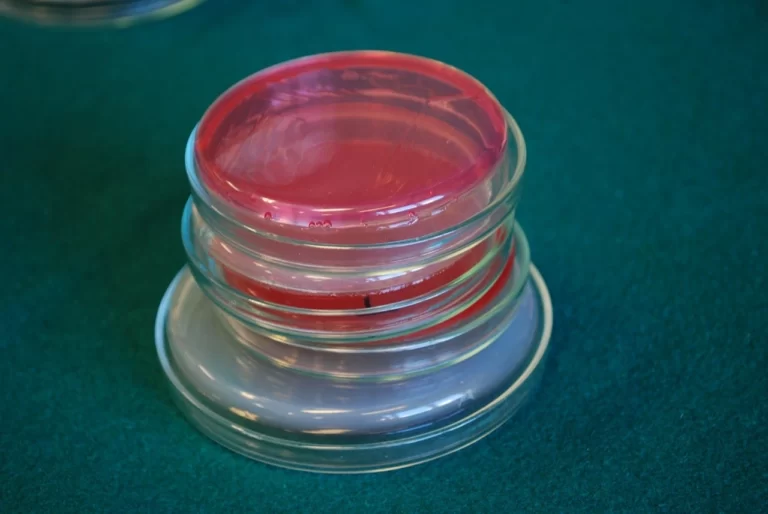Introduction: Understanding the Significance of Selective and Differential Agar in Bacterial Cultures
In the captivating world of microbiology, Selective and Differential Agar in Bacterial Cultures plays a vital role in cultivating and examining microorganisms. Various types of agar, including Selective and Differential Agar in Bacterial Cultures, serve specific purposes in bacterial cultures, enabling scientists to isolate, identify, and study different microorganisms. This blog article aims to delve into the fascinating realm of Selective and Differential Agar in Bacterial Cultures, shedding light on their distinct roles and applications.
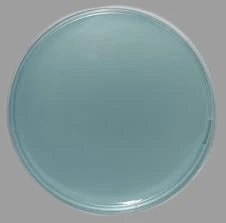
Uncovering CLED Agar: Isolation and Enumeration of Urinary Bacteria using Selective and Differential Agar in Bacterial Cultures
CLED Agar, short for Cystine Lactose Electrolyte Deficient Agar, is a valuable medium used to isolate and enumerate urinary bacteria, employing Selective and Differential Agar in Bacterial Cultures. Its unique composition of cystine, lactose, and electrolytes selectively promotes the growth of urinary bacteria while inhibiting the growth of contaminants. This selectivity aids in accurately identifying and enumerating pathogens associated with urinary tract infections using Selective and Differential Agar in Bacterial Cultures.
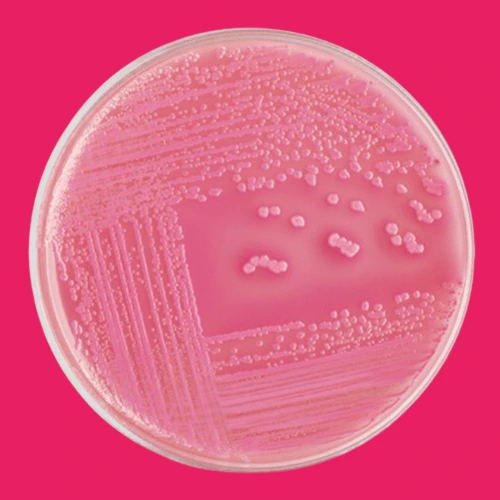
MacConkey Agar: Isolation and Differentiation of Gram-Negative Enteric Bacteria with Selective and Differential Agar in Bacterial Cultures
MacConkey Agar is a highly versatile medium that plays a crucial role in the isolation and differentiation of gram-negative enteric bacteria, particularly those found in the Enterobacteriaceae family. When it comes to bacterial cultures, MacConkey Agar utilizes Selective and Differential Agar techniques. This unique agar contains selective components like bile salts and crystal violet, which effectively impede the growth of gram-positive bacteria. Consequently, it establishes an ideal setting for the proliferation of gram-negative organisms. To further enhance its differentiating capabilities, MacConkey Agar includes lactose and pH indicators. This combination enables the differentiation of bacteria based on their ability to ferment lactose, facilitating the identification of potential pathogens within bacterial cultures.
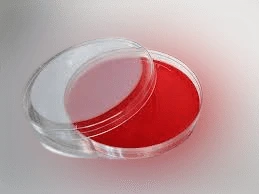
Blood Agar: A Nutrient-Rich Medium for Cultivating Microorganisms using Selective and Differential Agar in Bacterial Cultures
Blood Agar serves as a nutrient-rich medium that provides an ideal environment for cultivating a wide range of microorganisms with the help of Selective and Differential Agar in Bacterial Cultures. By supplementing the agar with sterile sheep or horse blood, the growth of fastidious organisms is enhanced, and hemolytic activity can be detected. This makes Blood Agar, with the inclusion of Selective and Differential Agar in Bacterial Cultures, a preferred choice for studying various bacteria, fungi, and even certain fastidious organisms with specific nutritional requirements.
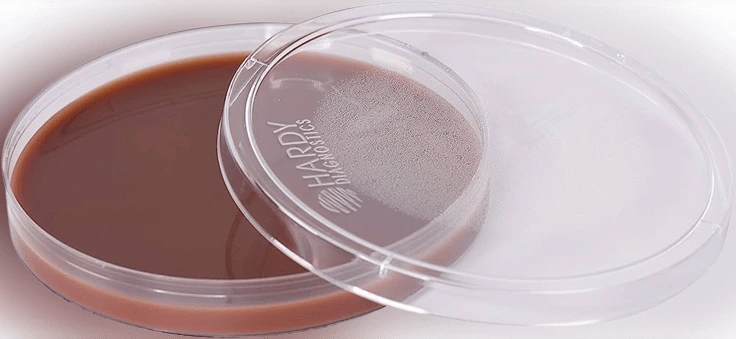
Chocolate Agar: Catering to the Needs of Fastidious Bacteria with Selective and Differential Agar in Bacterial Cultures
Chocolate Agar is a specialized medium designed to cater to the needs of fastidious bacteria, making use of Selective and Differential Agar in Bacterial Cultures. By subjecting blood agar to heat, the red blood cells lyse, releasing essential growth factors required by these demanding organisms. This unique preparation enables the cultivation of bacteria that rely on factors present in lysed red blood cells, contributing to the successful isolation and study of such microorganisms, employing Selective and Differential Agar in Bacterial Cultures.

XLD Agar: Identifying Salmonella and Shigella Species with Selective and Differential Agar in Bacterial Cultures
XLD Agar, which stands for Xylose Lysine Deoxycholate Agar, is an essential tool for identifying Salmonella and Shigella species within bacterial cultures. It utilizes Selective and Differential Agar techniques to achieve accurate results. By incorporating selective components such as xylose, lysine, and deoxycholate, this agar creates an environment that facilitates the growth of these specific organisms while inhibiting the growth of others. The presence of pH indicators further assists in distinguishing various bacterial species, ensuring precise identification and diagnosis when employing Selective and Differential Agar in Bacterial Cultures.
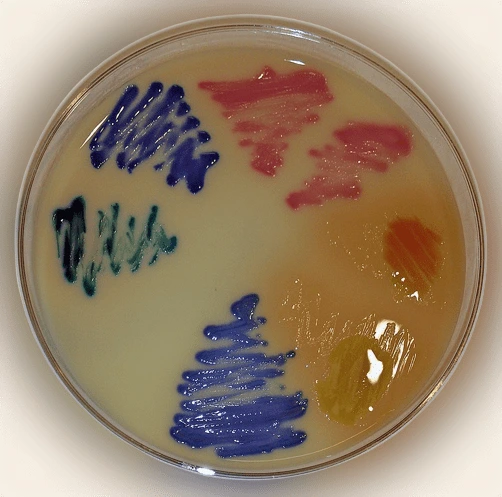
Michrom UTI Agar: Detecting and Enumerating Urinary Tract Pathogens with Selective and Differential Agar in Bacterial Cultures
Developed with a specific focus on detecting and enumerating urinary tract pathogens, Michrom UTI Agar targets Enterobacteriaceae, commonly associated with urinary tract infections, using Selective and Differential Agar in Bacterial Cultures. This selective and differential medium incorporates inhibitors and indicators that facilitate the identification of specific organisms. The formulation of Michrom UTI Agar, utilizing Selective and Differential Agar in Bacterial Cultures, allows for efficient isolation and enumeration of urinary tract pathogens, contributing to effective diagnosis and treatment strategies.
To read more about Types of Culture Media in Microbiology
![]()
Conclusion: Unlocking the Secrets of Bacterial Behavior through Selective and Differential Agar in Bacterial Cultures
Selective and Differential Agar in Bacterial Cultures plays a crucial role in bacterial culture, enabling researchers and clinicians to isolate, identify, and study various microorganisms. Each type of agar, including Selective and Differential Agar in Bacterial Cultures, has its own specific purpose in the microbiology laboratory. These agar types fulfil different functions, such as creating an appropriate environment for the growth of urinary bacteria or aiding in the identification of enteric pathogens. It is crucial for scientists to comprehend the specific compositions and uses of Selective and Differential Agar in Bacterial Cultures to unravel the intricacies of bacterial behaviour. This knowledge leads to advancements in diagnosis, treatment, and a comprehensive understanding of microbial ecosystems.

FAQS
Q: What is the purpose of using Selective and Differential Agar in bacterial cultures?
A: Selective and Differential Agar plays a vital role in bacterial cultures as it is utilized to isolate, identify, and study diverse microorganisms. It creates a specialized environment that selectively encourages the growth of specific bacteria while hindering the growth of others. Moreover, it enables the differentiation and identification of various bacterial species based on their distinctive characteristics.
Q: In what way do Selective and Differential Agar assist in identifying urinary tract pathogens?
A: Selective and Differential Agar, such as CLED Agar and Michrom UTI Agar, is specifically formulated to isolate and enumerate urinary bacteria. These agars contain selective components that promote the growth of urinary tract pathogens while inhibiting contaminants. By observing the growth characteristics and reactions on the agar, scientists can accurately identify and enumerate the pathogens associated with urinary tract infections.
Q: What role do Selective and Differential Agar play in differentiating gram-negative enteric bacteria?
A: Selective and Differential Agar, like MacConkey Agar and XLD Agar, is crucial for differentiating gram-negative enteric bacteria. These agar types include selective components that hinder the growth of gram-positive bacteria while fostering a conducive environment for the proliferation of gram-negative species. Furthermore, the incorporation of particular indicators and substrates facilitates the differentiation of diverse bacterial species by their capacity to ferment specific substances.
Q: How do Selective and Differential Agar support the cultivation of fastidious bacteria?
A: Selective and Differential Agar, such as Chocolate Agar, is designed to meet the nutritional requirements of fastidious bacteria. By subjecting blood agar to heat and releasing essential growth factors from lysed red blood cells, Chocolate Agar provides the necessary nutrients for the growth of demanding organisms. This allows for the successful isolation and study of fastidious bacteria that rely on factors present in lysed red blood cells.
Q: What are the benefits of using Selective and Differential Agar in bacterial cultures?
A: Selective and Differential Agar offers several benefits in bacterial cultures. It allows for the selective growth of specific bacteria while inhibiting the growth of unwanted contaminants, aiding in the isolation and identification of target pathogens. Moreover, these agars provide a means to differentiate between different bacterial species based on their unique characteristics, contributing to accurate diagnosis, treatment strategies, and a better understanding of microbial ecosystems.

